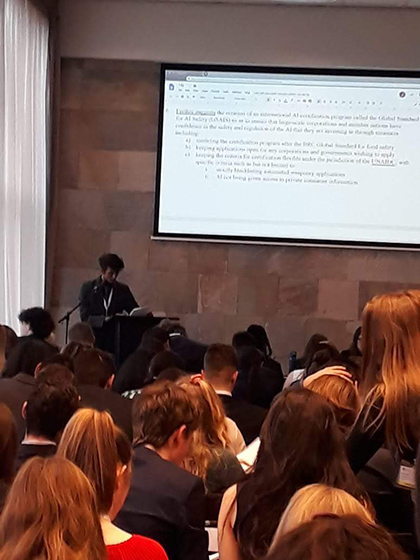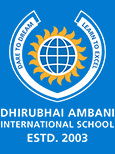The Hague International Model United Nations 2019

Delectable hot chocolate, the Peace Palace, 3500 enthusiastic delegates, and stimulating debates were just a few things that the Netherlands had waiting for us. This year, a delegation of nineteen students and two teachers attended the Annual Hague International Model United Nations (THIMUN) from the 25th of January to the 3rd of February, 2019
Preparations for the conference began months in advance. Delegates from the General Assembly (GA), Sustainable Development Commission (SDC), Environment Commission (EC), Human Rights Commission (HRC), Special Conference on Work in a Globalised World (SCWGW) and, the Historical Security Council of 1989 (HSC), researched on the conference’s theme - ‘ Work in a globalised world’, as well as their respective agendas. After formulating multiple clauses and resolutions, mock debate sessions were conducted by Student Officer Jai Parera wherein they “battered resolutions and tested speaking ability.” Meanwhile, Bilal Moin and Ishika Srivastava, advocates of Guyana in the International Court of Justice (ICJ), worked towards strengthening their case and compiling an evidence packet. Members of the Press Corps - Hitanshi Badani as text editor and Keya Shah as illustrator, worked towards the pre-issue of the conference’s newspaper titled ‘Munity’.

Delegates of the several committees within the GA, as well as HRC, SDC and SCWGW, debated as representatives of Tuvalu, an island nation in the South Pacific. Omar Kagzi of GA 1 asserts, “[his committee was] able to pass at least one resolution on each topic discussed, therefore finding important solutions.” Adyant Despande of the GA 2, echoing the concerns of several other delegates, said, “the large size of the committees were slightly intimidating but the people were really nice which made the experience a lot better.” Moreover, each committee was led by “High quality chairs who were well versed in procedure and policy”, as expressed by Aman Shah of the GA 3. Several delegates submitted resolutions which were discussed, criticized, and amended. Pratham Shroff of the GA 4 and Aman Ladia of the GA 5, both submitted comprehensive resolutions which were voted for and passed in their committees, “with near perfect unanimity”, Ladia adds. Overall, the diversity that the large numbers offered were a major advantage, exemplified by the words of Ishitaa Gupta of the GA 6, who said “to meet 110 different nationalities at the conference and hear their stances on common issues was also an unimaginably exciting experience.”


The HRC sub-commissions discussed issues including women’s rights in Afghanistan and work opportunities for the youth. Tarika Vohra of sub-commission 2 claims that this conference “taught [her] the importance and power of diplomacy and collaboration at the international level”. Pratham Mehta of the sub-commission 1 further develops that playing a smaller country “taught [him] the importance and power of diplomacy and collaboration at the international level.” Similarly, the Special Conference, which discussed more modern topics such as artificial intelligence. Vedant Mehra of sub-commission 1 and Shrihaan Gangopadhyay of sub-commission 2 both passed their resolutions after intense debate. Shrihaan Gangopadhyay shared an interesting insight on the “considerable number of enemies I had managed to foster as the mighty delegate of Tuvalu.”
Arnav Tawakley and Shawn Chauhan were members of the HSC as delegates of Senegal, a special committee which discussed historical events such as the Tianmen square protests in China. Tawakley expressed his awe for the committee “with top-notch delegates, riveting debate and specialised procedure.” Bilal Moin and Ishika Srivasta, debated in the ICJ on a border conflict between Guyana and Venezuala and managed to win their case. They worked under the guidance of Mr. Robert Stern who has been working in the legal sphere for over 4 decades. “This experience taught me about international law and its intricacies”, says Ishika. They also had the opportunity to visit the Peace Palace and wintness Yugoslavian war trials.

Finally, the Press Corps team published a daily newspaper. As an incentive to produce quality work, the issues were sold every morning, as described by Keye Shah - “Coming together to sell our newspapers was the most unique and fun part of the press experience.” Hitanshi Badani further elaborates that “the chaos, the deadlines, and the perpetual flow of ideas gave me a glimpse into real journalistic experience.”

Outside of the conference halls, the variety of food ever night, the stroop waffles, the visits to Delft, the sightseeing at an art museum and the beach, as well as the shopping and the foosball competitions in the hotel lobby, contributed towards an all-round unforgettable experience of balance between productivity and excitement.
- Hitanshi Badani Grade 11

